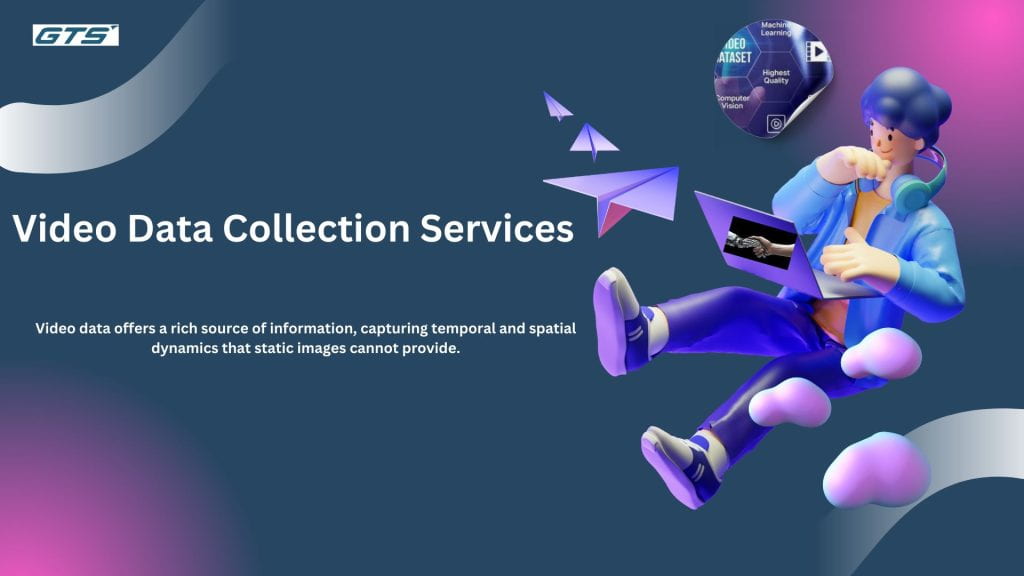
Introduction:
In the swiftly advancing domain of artificial intelligence (AI) and machine learning (ML), video data collection services have emerged as a fundamental element in the creation of robust and precise models. These services encompass the organized acquisition, annotation, and processing of video data to train algorithms for a variety of applications, ranging from autonomous vehicles to healthcare diagnostics. This detailed guide examines the complexities of video data collection services, highlighting their importance, methodologies, challenges, and future opportunities.
The Significance of Video Data in AI and ML
Video Data Collection Services as a valuable reservoir of information, capturing both temporal and spatial dynamics that static images fail to convey. This depth of information enables AI systems to comprehend intricate scenes, identify patterns, and make well-informed decisions. For example, in the context of autonomous driving, the analysis of video data empowers vehicles to detect and react to moving objects, traffic signals, and fluctuating road conditions in real-time.
Additionally, video data plays a crucial role in various applications, including:
Healthcare: Supporting surgical procedures through real-time analysis and evaluations following operations.
Retail: Improving customer experiences by examining shopping behaviors and refining store layouts.
Security and Surveillance: Observing activities to identify anomalies and promote public safety.
The dynamic characteristics of video data render it essential for training AI models that necessitate an understanding of motion, context, and interactions within different environments.
Essential Elements of Video Data Collection Services
The effective collection of video data involves several fundamental elements:
- Data Acquisition
This refers to the process of capturing video footage pertinent to the intended application. During acquisition, it is essential to take into account factors such as frame rate, resolution, lighting conditions, and camera angles to guarantee the quality and relevance of the data.
- Data Annotation
Annotation entails the labeling of video frames to recognize objects, actions, or events. Various techniques are employed, including bounding boxes, polygons, key points, and semantic segmentation. The precision of annotation is vital, as it significantly influences the learning and performance of the model.
- Data Management
Handling substantial amounts of video data necessitates reliable storage solutions and effective retrieval systems. Proper organization of data, accompanied by relevant metadata, facilitates smooth access and processing during the training phase.
- Quality Assurance
The implementation of rigorous quality checks is essential to maintain the integrity and appropriateness of the data for training purposes. This process includes verifying the accuracy of annotations, ensuring consistency across frames, and addressing any biases or errors.
Challenges in Video Data Collection

Video data collection is essential for the advancement of artificial intelligence; however, it is accompanied by numerous challenges:
- Volume and Complexity
The substantial size of video data poses significant challenges in terms of storage and processing. Each individual frame often necessitates separate annotation, which dramatically increases the workload in comparison to static images.
- Annotation Labor
The process of manual annotation is not only labor-intensive but also susceptible to human error. Achieving consistency among different annotators and upholding high standards of accuracy requires careful management.
- Privacy Concerns
The gathering of video data, particularly in public or sensitive environments, raises important privacy considerations. Compliance with regulations and ensuring the anonymization of data when required is of utmost importance.
- Diversity and Bias
It is vital to ensure that the dataset encompasses a wide range of scenarios to mitigate model bias. Insufficient diversity can result in models that underperform in practical applications.
Best Practices in Video Data Collection
To effectively manage the intricacies of video data collection, the following best practices are advised:
- Establish Clear Objectives
Set specific aims for the data collection initiative, ensuring they align with the intended use of the AI model.
- Ensure Data Diversity
Gather data from a variety of conditions, environments, and scenarios to develop a well-rounded dataset.
- Implement Comprehensive Annotation Protocols
Create thorough guidelines for annotators to ensure consistency and precision. Employ annotation tools that enhance the efficiency of the labeling process.
- Prioritize Data Security and Privacy
Adopt strategies to safeguard sensitive information, including data encryption and access controls. Ensure adherence to applicable data protection laws.
- Continuous Quality Monitoring
Regularly evaluate the quality of the collected data and its annotations. Establish feedback mechanisms to promptly address any identified concerns.
Applications of Video Data Collection Services
The uses of video data collection services extend across various sectors:
- Autonomous Vehicles
Training self-driving vehicles to navigate intricate environments by identifying objects, pedestrians, and traffic signals.
- Healthcare
Supporting diagnostics and treatment planning through the examination of medical procedures and patient behaviors.
- Retail
Improving customer experiences by analyzing in-store behaviors and optimizing product placements.
- Security
Surveilling public areas to identify suspicious activities and prevent incidents.
- Sports Analytics
Evaluating player movements and strategies to enhance performance and guide coaching decisions.
Future Directions in Video Data Acquisition
As technological advancements continue, several key trends are influencing the future of video data acquisition:
- Automation of Annotation
Utilizing artificial intelligence to streamline the annotation process, thereby minimizing manual effort and enhancing overall efficiency.
- Generation of Synthetic Data
Producing synthetic video data to supplement real datasets, thereby increasing diversity and addressing privacy issues.
- Real-Time Data Analysis
Creating systems that can process and analyze video data instantaneously, facilitating prompt decision-making.
- Improved Privacy Protections
Adopting advanced methodologies to anonymize data, ensuring individual privacy is safeguarded while maintaining data utility.
Conclusion
Video data acquisition services play a crucial role in the evolution of artificial intelligence and machine learning applications. By effectively capturing, annotating, and managing video data, these services deliver the essential datasets required for training advanced models.
Visit Here: GTS.AI
Comments on “The Importance of Video Data Collection Services in AI and Machine Learning”